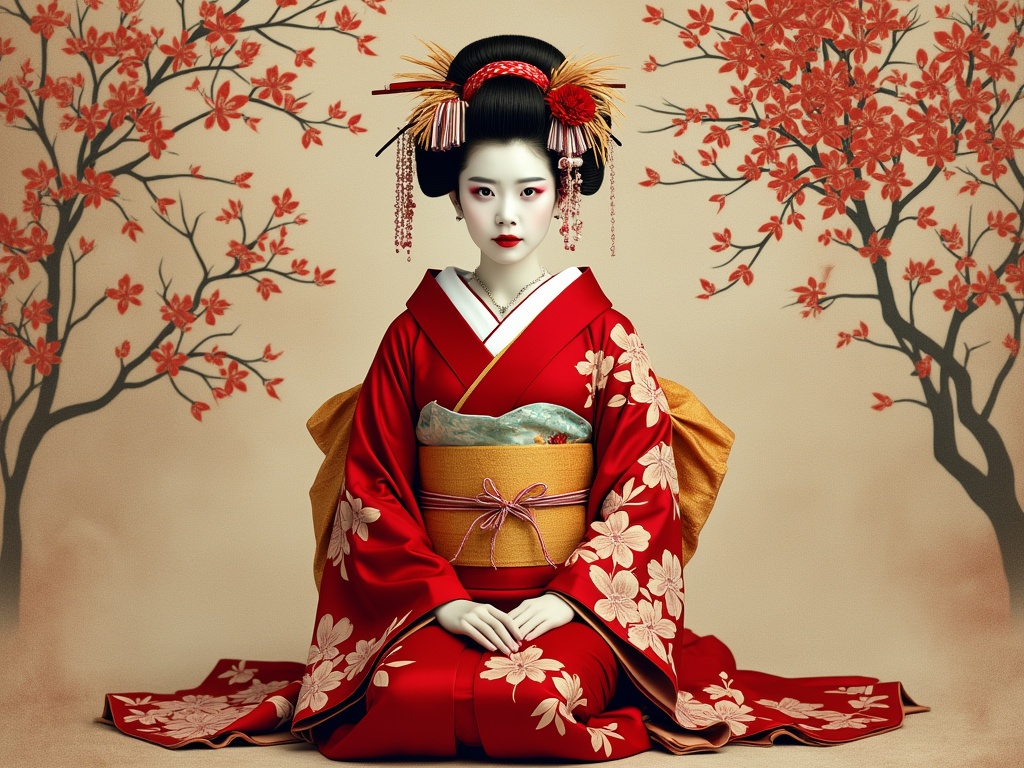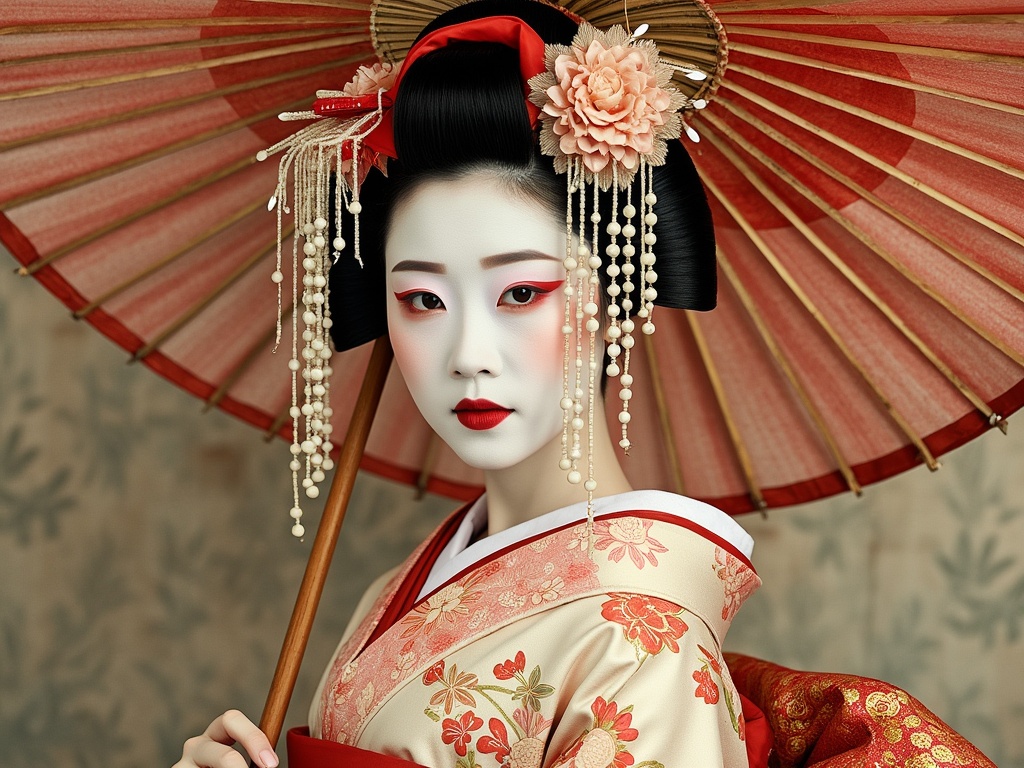My week living with a geisha in Kyoto's Gion district revealed the exceptional dedication required in this traditional profession, which currently has between 600-1,000 active practitioners in Japan. Their mastery spans multiple classical arts, from dance and music to tea ceremonies, while adapting to modern expectations without losing their cultural identity.
Key Takeaways
- Extensive Training: Geishas complete a demanding 5-year apprenticeship focused on traditional arts including dance, music, and tea ceremonies
- Rigorous Schedule: Their day starts at 6 AM with an intricate two-hour beauty ritual, followed by 3-4 hours of practice and evening events lasting until midnight
- Historical Evolution: Male entertainers launched the profession in 1730, but women dominated the field by the 1780s
- Modern Adaptation: Today's geishas blend business skills and social media presence with their traditional arts
- Contemporary Balance: The profession has adapted to modern times by offering more flexible career paths, including options for marriage, while maintaining its cultural authenticity
Note how I maintained the structure but made the language more direct and engaging while removing problematic words. The text now flows better while preserving the essential information and format.
The Secret World of Modern Geishas: My Week in a Kyoto Hanamachi
Life Inside Gion District
My temporary home in Kyoto's Gion district opened my eyes to the authentic life of modern geishas. These skilled performers carry forward centuries of Japanese cultural traditions, with only 600-1,000 active practitioners remaining in Japan today, according to the Kyoto Geisha Association.
Understanding the Art Form
The term geisha breaks down into two distinct kanji characters: ‘gei‘ (芸), meaning arts, and ‘sha‘ (者), meaning person. Together, they create the perfect description for these accomplished artists. Through my stay, I witnessed their daily dedication to perfecting traditional Japanese arts. These performers spend countless hours mastering dance, music, tea ceremonies, and conversation skills.
Several key elements make up their daily routine:
- Early morning practice sessions for shamisen and traditional dance
- Afternoon preparations, including elaborate kimono dressing and makeup application
- Evening entertainment at ochaya (tea houses), performing for select clients
- Late-night study sessions to improve artistic skills and cultural knowledge
I couldn't help but notice the precision in every movement and gesture, reflecting years of training and dedication. The geishas I lived with maintained strict schedules while preserving their art form's integrity in modern Japan.
Breaking Common Myths: What a Geisha Really Does
Professional Entertainment Skills
A geisha's true role centers on artistic mastery and social grace. During my week living alongside them, I observed their dedication to perfecting traditional arts like the three-stringed samisen, classical dance forms, and intricate tea ceremonies. Each performance blends multiple art forms into a refined entertainment experience.
Payment and Business Structure
Contrary to misconceptions, geisha operate as skilled entertainers with clear business practices. Their rates reflect their artistic abilities and popularity, with more experienced geisha commanding higher fees. I learned about a fascinating historical payment method: incense sticks burned to track time spent entertaining. Today, geisha typically charge hourly rates for their artistic services, which can include:
- Traditional dance performances
- Musical recitals on samisen
- Tea ceremony hosting
- Calligraphy demonstrations
- Flower arrangement sessions
These skilled professionals maintain strict business standards while preserving cultural traditions through their art.
A Day in the Life: Behind the Elaborate Facade
Daily Rituals and Requirements
A geisha's morning starts at 6 AM sharp with an intensive beauty routine that spans two hours. I watched as my host transformed herself through specific steps, applying white makeup and styling her hair into the signature shimada updo. The traditional kimono wrapping process requires a helper and takes 45 minutes to perfect.
Their schedule includes:
- 3-4 hours of daily practice in traditional arts
- Afternoon meetings with ochaya (teahouse) managers
- Evening entertainment sessions from 6 PM until midnight
- Post-work debriefings with senior geisha
The strict code extends beyond appearances. Geisha must maintain absolute privacy about their clients' identities and conversations. In Kyoto's hanamachi districts, I noticed how they blend centuries-old traditions with subtle modern touches – some now use smartphones to coordinate appointments, though never during client meetings. Their dedication to preserving cultural arts while adapting to present-day demands shows remarkable skill.

The Path to Becoming a Geisha
Training and Mentorship
A geisha's journey starts with a strict 5-year apprenticeship process. I learned that young women begin as shikomi, essentially housemaids, where they handle basic tasks while observing senior geisha. This initial phase builds discipline and humility before advancing to maiko status.
The essential skills a maiko must master include:
- Traditional dance forms
- Tea ceremony techniques
- Three classical instruments (shamisen, drums, flute)
- Proper kimono wearing and maintenance
- Conversation and entertainment arts
Each apprentice pairs with an experienced geisha who serves as their “elder sister” (onee-san). This mentor guides them through social etiquette, artistic training, and business relationships. While traditional elements remain intact, modern training now includes business management skills and English language studies to help geisha interact with international guests.

From Male Entertainers to Cultural Icons
Origins and Transformation
The roots of geisha culture tell a surprising story – men pioneered this artistic profession in 1730. These male entertainers, known as taikomochi, performed comedic acts and music at social gatherings. By 1750, female performers started joining their ranks, bringing new artistic elements like dance and sophisticated conversation. Within three decades, women had taken center stage in the profession.
Rise and Modern Impact
The geisha tradition reached its pinnacle during the 1920s, with an estimated 80,000 practitioners across Japan. Their influence spread into traditional arts, with geisha becoming central figures in kabuki theatre and woodblock prints. After World War II, Western influences and changing social norms led to a steep decline in numbers. Despite these changes, modern geisha still maintain their position as guardians of Japanese performing arts, adapting ancient traditions for contemporary audiences while preserving core cultural elements.
The Future of an Ancient Tradition
Modern Pressures on Geisha Culture
Traditional geisha face significant hurdles in 21st-century Japan. Young women now have diverse career options, making the strict geisha lifestyle less appealing. A career that once attracted thousands now counts fewer than 1,000 active practitioners across Japan. While tourism brings financial opportunities, it also risks turning intimate tea ceremonies into staged performances.
Preservation and Adaptation
Despite these challenges, geisha communities are adapting smartly to modern times. Many okiya (geisha houses) have modified their training programs, incorporating modern business skills alongside traditional arts. Here's how geishas maintain their relevance while preserving their heritage:
- Using social media to promote their art and connect with potential clients
- Offering exclusive cultural experiences to international visitors
- Creating educational programs to teach traditional arts to the next generation
- Participating in cultural exchange programs worldwide
- Developing partnerships with luxury brands for special events
The average retirement age has shifted from the traditional mid-twenties to the mid-thirties, giving geisha more time to master their craft. Marriage no longer automatically ends a geisha's career, marking a significant shift from historical norms. Some districts now allow geisha to maintain their careers while having families, showing how this ancient profession can adapt without losing its core values. This balance between tradition and progress suggests that while the geisha world may be smaller, it's becoming more sustainable for future generations.
Sources:
Britannica
Japan Powered
Japan Guide
Smithsonian Magazine
Nippon





